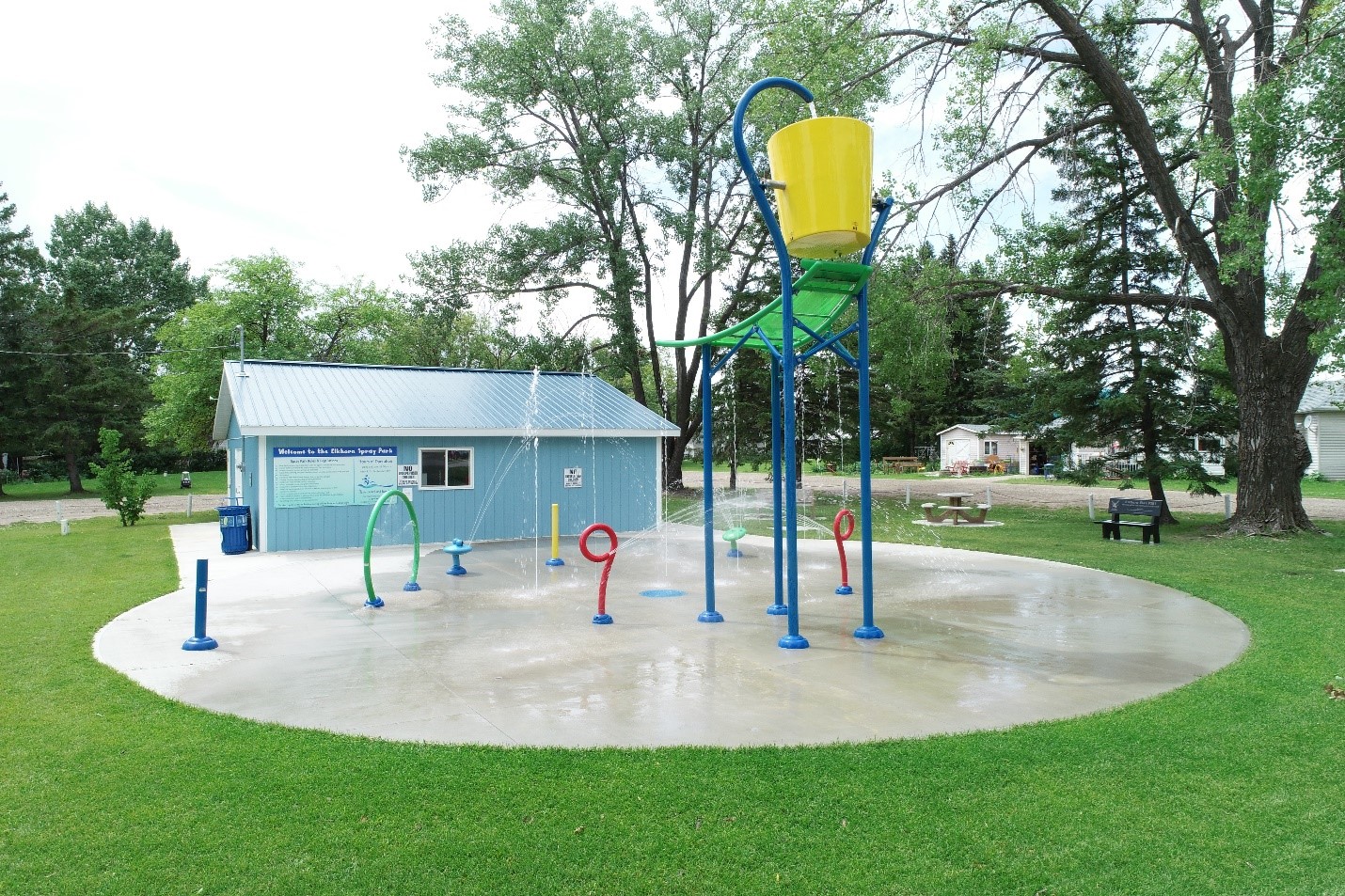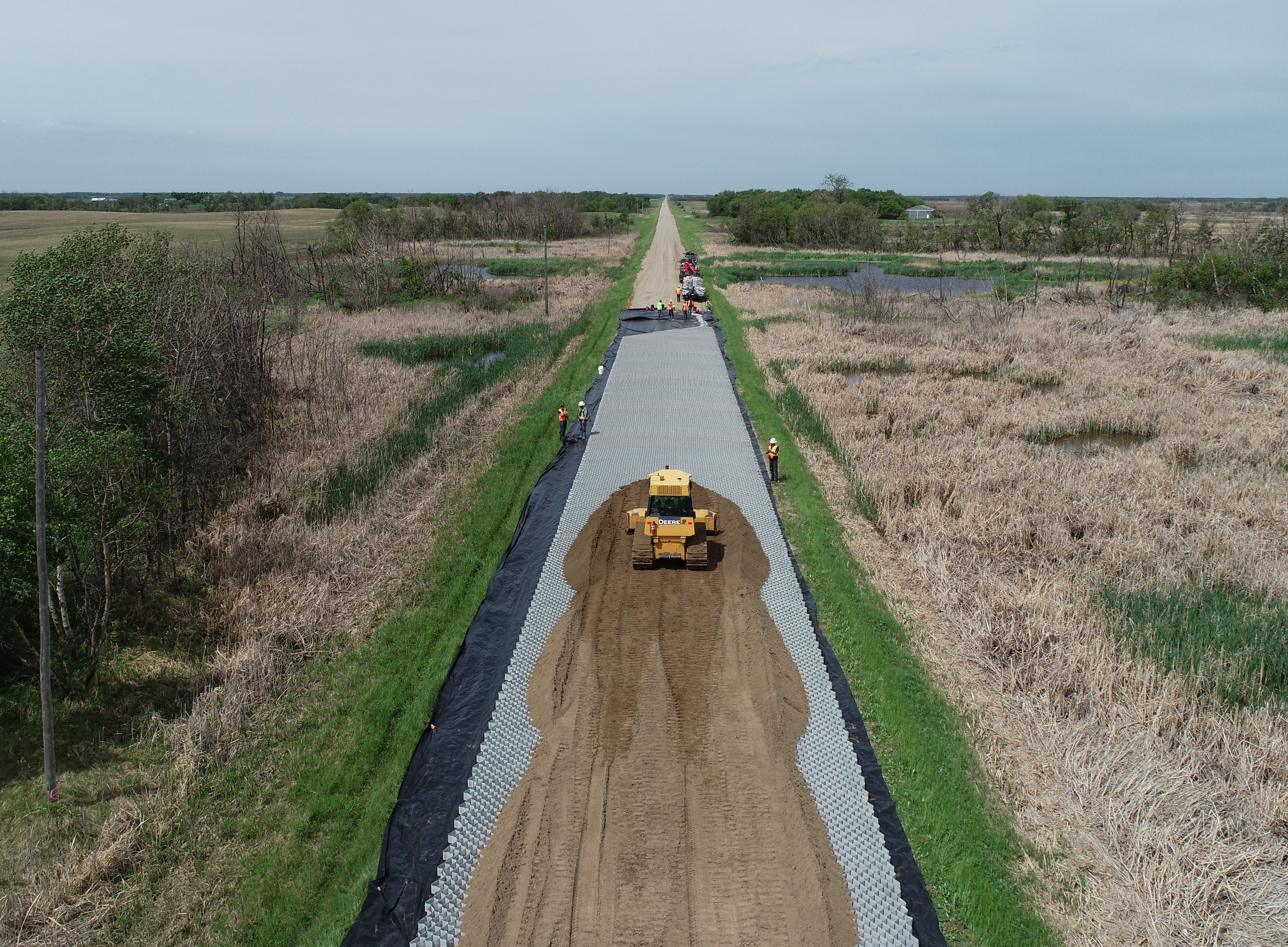
Background
Located due west of Winnipeg near the Saskatchewan border, Wallace-Woodworth, Manitoba, is an expansive rural municipality of roughly 2,000 square kilometres and 2,750 people. It was established in 2015 with the amalgamation of the municipalities of Wallace and Woodworth and the Village of Elkhorn, and its primary industries are oil and agriculture.
With a grant from the Municipal Asset Management Program (MAMP), Wallace-Woodworth set out to develop an asset management policy, create an asset registry for roads and culverts and conduct a risk assessment of its assets. In the process, the municipality learned how formalized asset management planning can contribute to retaining vital knowledge that can be lost when a staff or committee member leaves.
“Wallace-Woodworth’s participation in MAMP has been eye-opening for staff and elected officials. It helped us build a strong foundation of asset management knowledge, and our confidence has increased significantly. We have a better understanding of where we are headed and are excited about our efforts to document asset history and staff knowledge. We know this work will benefit our community for years to come.”
~ Garth Mitchell, Chief Administrative Officer
Highlights
- Developing “what, when and why” history books and using cross-departmental training to capture staff knowledge
- Using data for proactive planning and decision-making
The challenge
Wallace-Woodworth recognizes that Manitoba’s provincial mandate has been a driving factor influencing its asset management work. However, asset management planning was already an attractive option, given its potential to tackle several issues facing this rural municipality:
- Consolidating a variety of systems and processes following amalgamation
- Addressing aging infrastructure and increased demands for maintenance and rehabilitation
- Implementing more structured and proactive processes for decision-making and prioritization
The approach
Much of the project was spearheaded by the Asset Management and GIS Technical Assistant. This new position, with a 50/50 split between asset management and GIS, was established in 2021 to drive asset management and emphasize its importance, based on the belief that an in-house resource was the best way to develop and improve the program and retain knowledge gained. The CAO and department heads also played a direct role, and a consultant with broad expertise in road assessment was integral to the development of the asset registry for roads and culverts, driving every single road to assess conditions.
Five municipal staff from Wallace-Woodsworth took part in awareness-raising and skill development training funded by MAMP and delivered through the Association of Manitoba Municipalities and NAMS Canada. Staff also benefited from NAMS Canada’s Professional Certificate in Asset Management Planning course and a webinar series from the Manitoba Municipal Administrators that highlighted the City of Selkirk’s asset management practices.
The barriers
Researching methods and best practices and setting up the processes took longer than expected, although staff anticipate that future work will be faster now that processes are in place and people know what to expect.
Informal decision-making and communication channels sometimes made it difficult to set plans, stick to deadlines and maintain records.

Results
Wallace-Woodworth now has an asset management policy, a detailed asset registry for close to 1300 kilometres of roads and culverts and a 2023 Asset Risk and Condition Assessment Report. The work also sparked a realization that better processes were needed to retain corporate memory as staff neared retirement. To that end, Wallace-Woodworth is:
- Developing “history books” to summarize major events related to asset operation, maintenance and renewal, covering questions such as what, when, why, where, how, by whom, and with what costs. The history books include contracts and job descriptions of relevant staff, and a year-end summary by the department manager noting work done, lessons learned, and considerations for the coming year. They also indicate where more information—physical or digital—can be found. This approach helps new staff in particular benefit from the expertise of those who came before. Water utility is currently underway and other departments will follow.
- Implementing cross-departmental training and peer shadowing to share knowledge and standardize and replicate processes. This is reducing the number of projects being done in isolation, improving lifecycle cost tracking, and generating discussions about not only what’s working, but also what isn’t, an invaluable step in updating processes and procedures.
Staff see their participation in the MAMP-funded project as a key success and are enjoying the resulting boost in their knowledge and confidence around asset management practices. They appreciate the opportunities to exercise their newfound ability to prioritize projects and make recommendations based on risk, rather than waiting for an asset to fail or be prioritized by ratepayers or councillors. For instance, the new registry for roads and culverts means they don’t have to wait for spring thaw to make recommendations about gravelling and shoulder pulling, and they already see the potential for developing data-driven risk management plans.
There is more awareness of the benefits of managing assets proactively. For instance, during budgeting, council requested lists of assets within a class, and is interested in a risk determination procedure for assets. As well, economic development staff are considering how improving asset management practices for buildings might help with grant applications, and there are more requests for operational and maintenance data.

Lessons learned
- Adapt existing resources and methodologies. Wallace-Woodworth adapted the best practices approach in the PASER gravel and asphalt roads manuals by adding its own road maintenance and other policies.
- Don’t rush to buy asset management software. Wallace-Woodworth is taking time to find a system that truly fits its needs. Until then, it continues to use an easily customizable Excel spreadsheet as its asset registry.
- Educate council. Council members acknowledge that additional training would help them engage in more meaningful discussion, particularly around asset management policies and criticality and risk scores.
Next steps
Wallace-Woodworth plans to set levels of service and key performance indicators, track asset performance and further improve standardization for communities across the municipality. As part of these activities, they will be implementing asset management standard operating procedures that will include steps, timelines and guidelines on information storage and sharing.
Contact
Brianna Hughes
Asset Management/GIS Technical Assistant
R.M. of Wallace-Woodworth, MB
204-748-1239
b.hughes@wallace-woodworth.com
Related resources

This resource was developed by the Municipal Asset Management Program(MAMP)
MAMP was designed to help Canadian municipalities strengthen their infrastructure investment decisions based on reliable data and sound asset management practices. This eight-year, $110-million program was funded by the Government of Canada and delivered by the Federation of Canadian Municipalities. It was implemented in partnership with municipal, provincial and territorial associations and other key stakeholders.
Want to explore all GMF-funded projects? Check out the Projects Database for a complete overview of funded projects and get inspired by municipalities of all sizes, across Canada.
Related Resources
Explore these resources to learn more about asset management knowledge preservation
Tip sheet: Preserving asset management knowledge
Strategies to retain, share and build local asset management momentum
Read moreCase study: Retaining organizational knowledge in Thunder Bay
How improved asset management processes can help preserve information
Read more
